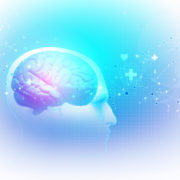Can two decades of research be wrong about the benefits of direct neurofeedback for neuropsychiatric disorders?
I don’t think so!
With the growing awareness around complex trauma and the corresponding increase in mental health challenges, such as anxiety, depression, and addiction, it is mission critical that the healthcare system take off the blinders and drop the belief that prescription medications are the first line of attack to address such challenges. Most health care insurance will now cover acupuncture and chiropractic services, which are considered complimentary and alternative medicine (CAM) practices, in addition to more traditional, conventional medical services for what ails the body. However, they seem more reluctant to turn to CAM when addressing what ails the mind. After twenty years of research, direct neurofeedback or transcranial direct current stimulation has been shown to relieve the symptoms of many neuropsychiatric disorders.
The mind is the different levels of consciousness that arises from the brain, the main organ of our neurological or nervous system in the human body. Therefore, the mind works through the organ of the brain to think, feel and decide what action to take or not. So when we are challenged by our mental health, we can work with the mind and/or the brain. Traditionally, medications were prescribed for the brain while psychotherapy was prescribed for the mind. But what if someone is not responding to the medications or doesn’t want to take medications at all? How can we then work with the brain directly, while also working with the mind? That’s where direct neurofeedback comes in.
With the growing understanding of the neuroplasticity of the brain, more noninvasive brain stimulation options have been explored. Neuroplasticity is the nervous system’s innate ability to reorganize itself towards health and balance in response to stimuli by creating new neural networks in the brain. This facilitates the neurons to regulate their responses to new situations. Direct neurofeedback communicates with the brain directly in its own natural electromagnetic language, gently stimulating the brain’s neuroplasticity, facilitating the interruption of the imbalances of the brain and supporting the development of a more balanced state. This approach trusts in the human body’s inborn ability to heal itself when the support structures are organic.
When someone has a history of complex trauma, the body and mind naturally adapt for survival, and symptoms of that adaption include, but are not limited to, panic attacks, obsessive-compulsive thoughts and behaviors, fibromalgia, self-harm behaviors, impulsivity, chronic fatigue, poor concentration and procrastination. The American Psychiatric Association produces a book, called the Diagnostic and Statistical Manual of Mental Disorders, creating labels for all of these normal human adaptations to a chronic hostile environment. The book might be more appropriately titled Human Trauma Responses. When the healthcare system wears this lens when offering healing modalities, it can begin to embrace person-centered care that involves personal choice, which trauma robs us of. Within choice of healing journeys, CAM options become more available when backed by decades of research. As a safe and affordable neuromodulation approach, direct neurofeedback has potential in many clinical uses.
If you would like to read more about this research:




